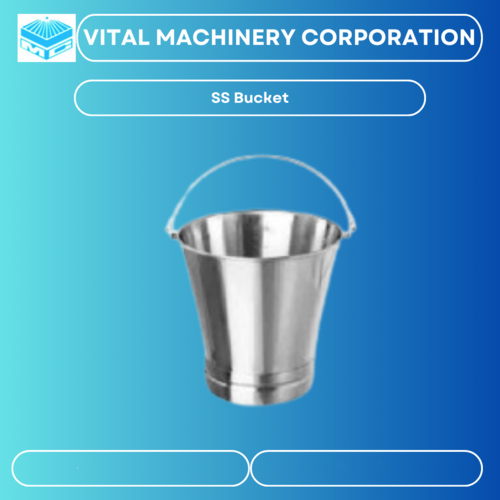
Multi Mill
95000 INR/Piece
Product Details:
- Usage & Applications Industrial
- Type Pharmaceutical Packaging Machine
- Material SS316, SS304
- Computerized No
- Control Mode Automatic
- Voltage 240 Volt (v)
- Power 12 Horsepower (HP)
- Click to View more
X
Multi Mill Price And Quantity
- 70000.00 - 145000.00 INR/Piece
- 1 Piece
- 95000 INR/Piece
Multi Mill Product Specifications
- Pharmaceutical Packaging Machine
- 240 Volt (v)
- SS316, SS304
- 12 Horsepower (HP)
- 1 Year
- No
- Sliver
- Automatic
- Industrial
Multi Mill Trade Information
- 10 Piece Per Month
- Hours
- As per requirements
- All India
- ISO : 9001 , 2008
Product Description
VITAL MACHINERY CORPORATION- A multi mill is a versatile milling machine used in various industries for the comminution (reduction of particle size) of solid materials. It is particularly suitable for the processing of powders and granules. Here's an overview of its features, components, and applications:
Features and Components:
Design: Multi mills typically feature a cylindrical housing with a rotor assembly inside. The housing may have multiple screens or perforated plates of different mesh sizes for controlling the particle size of the milled material.
Rotor Assembly: The rotor assembly consists of a centrally mounted shaft with multiple blades or knives attached. These blades rotate at high speeds within the housing, imparting kinetic energy to the particles and causing them to be crushed or sheared against the screens or perforated plates.
Drive Mechanism: Multi mills are powered by electric motors that drive the rotation of the rotor assembly. The speed and direction of rotation can usually be controlled to optimize the milling process for different materials and particle sizes.
Screen/Perforated Plate: The screens or perforated plates located at the bottom of the housing serve as the milling surface. They help control the size of the milled particles by allowing only particles smaller than the perforation size to pass through.
Feed Hopper: Some multi mills feature a feed hopper located above the rotor assembly to facilitate the feeding of the material into the milling chamber. The hopper may be equipped with a feed control mechanism to regulate the flow of material into the mill.
Discharge Mechanism: Multi mills typically have a discharge port or chute through which the milled material exits the milling chamber. The discharge mechanism may include a valve or gate to control the flow of material out of the mill.
Material Feeding: The solid material to be milled is fed into the milling chamber either manually or using a feeding mechanism such as a feed hopper.
Milling Process: The electric motor drives the rotor assembly, causing the blades to rotate at high speeds. As the material comes into contact with the rotating blades, it is subjected to impact, shear, and compression forces, leading to size reduction.
Particle Size Control: The size of the milled particles is controlled by the mesh size of the screens or perforated plates. Finer particles pass through the perforations while larger particles are retained inside the milling chamber for further size reduction.
Discharge: The milled material exits the milling chamber through the discharge port or chute. It may be collected in a container or conveyed to subsequent processing equipment for further handling.
Applications:
Pharmaceutical Industry: Multi mills are used for granulation, pulverization, and size reduction of pharmaceutical ingredients, powders, and granules.
Food Industry: They are employed for milling food ingredients, spices, herbs, and other food products.
Chemical Industry: Multi mills find applications in the milling of chemical powders, pigments, dyes, and additives.
Cosmetic Industry: They are used for milling cosmetic powders, pigments, and formulations.
Agricultural Industry: Multi mills are utilized for processing agricultural products such as grains, seeds, and fertilizers.
Overall, multi mills offer efficient and versatile milling solutions for a wide range of solid materials, making them indispensable equipment in various industries.
Tell us about your requirement

Price:
Quantity
Select Unit
- 50
- 100
- 200
- 250
- 500
- 1000+
Additional detail
Mobile number
Email
Other Products in 'Pharmaceutical Machine' category
VITAL MACHINERY CORPORATION
GST : 24AEBPP4472J1ZE
GST : 24AEBPP4472J1ZE
Unit -1 : Plot No. 4796, Near Lyka Lab, GIDC Estate, Opp. Water Tank, Ankleshwar - 393002, Gujarat, India
Phone :07971191130
Unit -2 : Plot no. 7509, Near Karmatur Chokdi, Ankleshwar GIDC, Ankleshwar, Bharuch, Gujarat - 393002.
Sister concern company :- Vijay Enterprise
Address :- Plot no. 4915, GIDC Estate Ankleshwar, Bharuch, Gujarat - 393002.
 |
VITAL MACHINERY CORPORATION
All Rights Reserved.(Terms of Use) Developed and Managed by Infocom Network Private Limited. |













